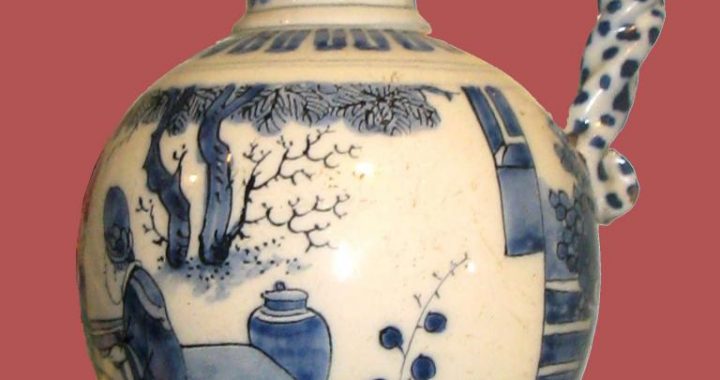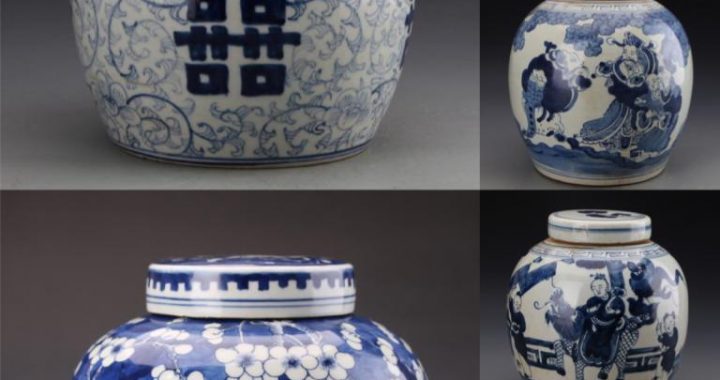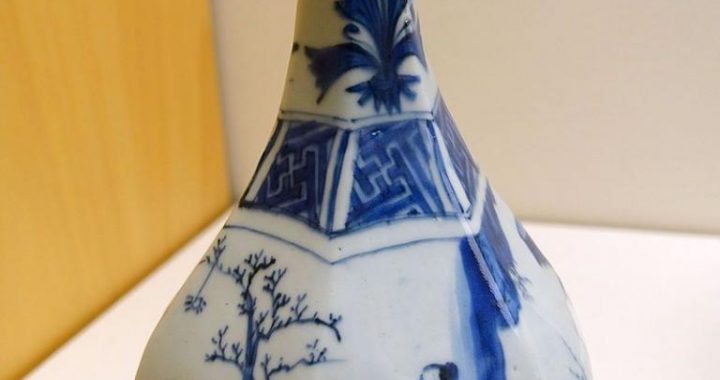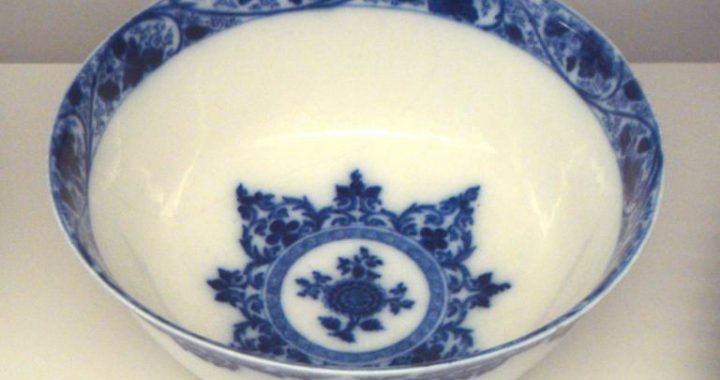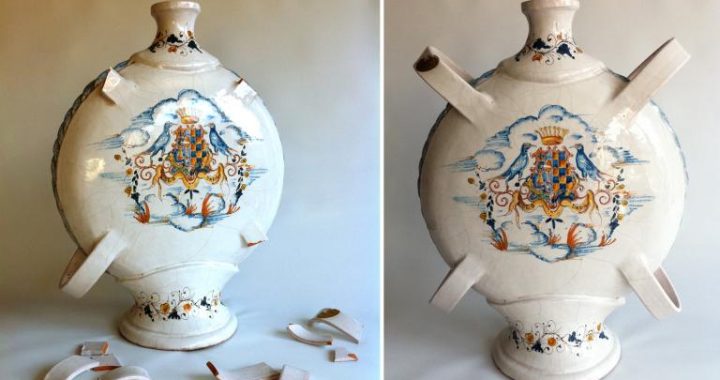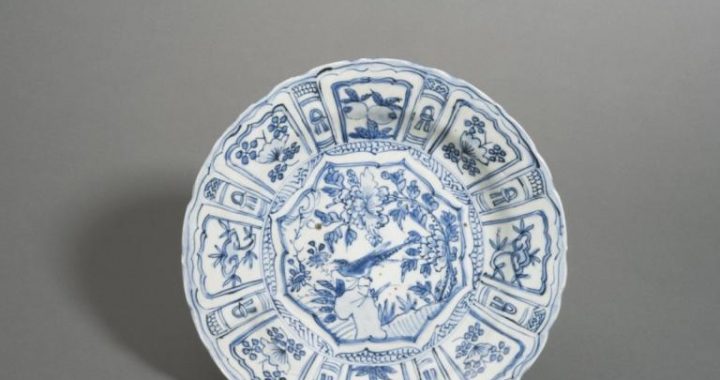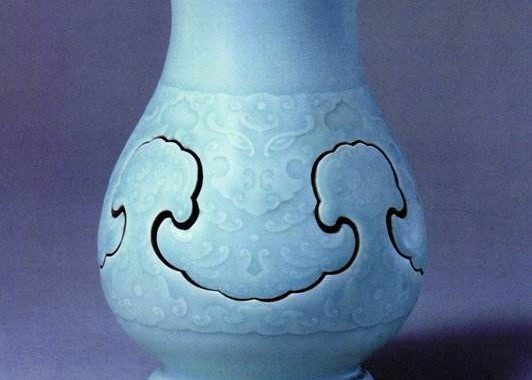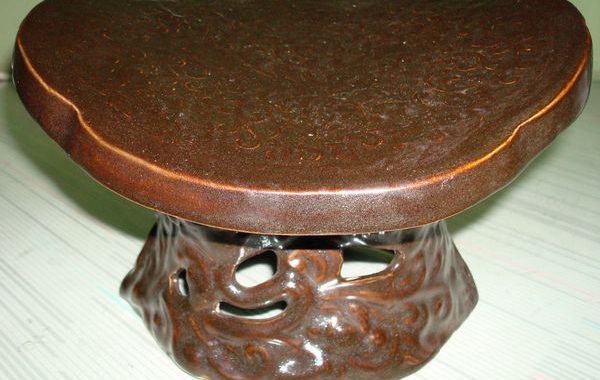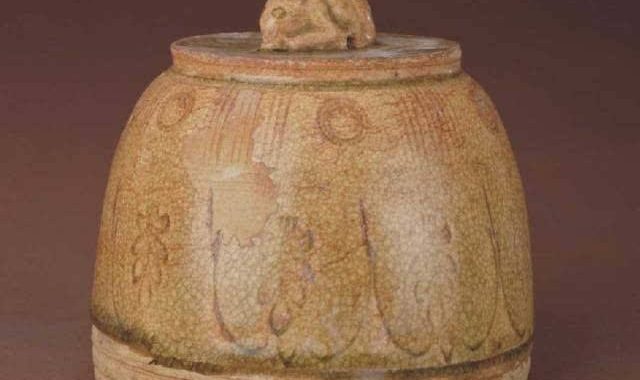Arts and Crafts during the Ming-Qing Dynasties and Republic of China
11 min readThe artisan system of the Ming Dynasty inherited the hereditary system of the Yuan Dynasty. Artisans had more personal freedom. During the non-service period, they had the freedom to be freely engaged in handicraft profession, which promoted the development of handicrafts.
The handicrafts of the Ming Dynasty achieved obvious development in both technology and art and many handicraft varieties formed their respective famous centers of production. Jingdezhen was the nationwide pottery-making center. During different periods there were different technological characteristics and various kinds of utensils, such as the Yashou Bei(a kind of cup) during the Yongle period(1403-1424), the celadon during the Xuande period (1426-1435), the colored celadon and the Ji Gang Bei(another kind of cup) during the period of Chenghua (1465-1487), the mono-colored glaze during the period of Zhengde(1506-1521), and the export oriented porcelain during the period of Jiajing(1522-1565) and Wanli(1573-1619). The technology of dyeing and weaving in the Ming Dynasty developed by leaps and bounds, such as the silk weaving in Suzhou and Hangzhou, the cotton weaving of Songjiang, the printing and dyeing of Wuhu, and the embroidery of the Gu School in Shanghai. The metal handicraft was featured with the Xuande Lu(a batch of small copperware cast with the copper mined in southeast Asia for meeting the demands of offering sacrifices to gods and ancestors as well as for lavendering clothes) and cloisonne(a kind of enamel with copper base and clipped copper wire). The development of garden buildings, the abundance of timber and the improvement of carpenter’s tools brought up the developed furniture handicraft of the Ming Dynasty, which was known for its simple and unsophisticated shape, perfect handicrafts and refined style. In the Ming Dynasty, numerous craftsmen came to the fore, such as Gong Chun and Shi Dabin skilled in Zisha Tao(purple-clay pottery), Han Ximeng clever at the embroidery of the Gu School, Madame Ding skillful in cotton, Yang Xun accomplished in golden lacquer, Lu Zigang good at jade carving and the family of Zhu are talented at bamboo carving.
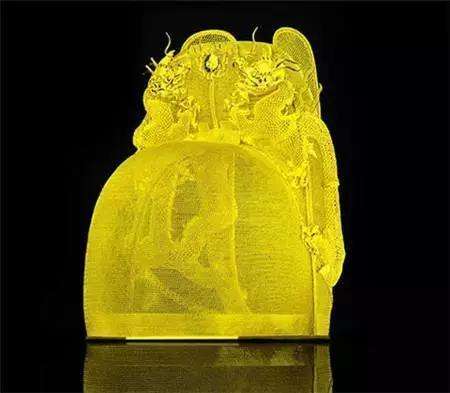
Gold crown from the Ming Dynasty,24 cm high, woven with extremely thin gold filament, having two dragons vying with each other for a pearl on the top. It is one of the masterpieces of gold and silver handicrafts of Ming Dynasty.
Multicolored blueand-white vase from the Qing Dynasty, collected in Musee Guimet, France.
In the Ming Dynasty, the new idealist philosophy “Knowledge is action”put forward by Wang Shouren was very popular. Meantime,a school of thought emphasizing erudition, another stressing practical purpose and still another accentuating scientific studies all came into being. In the later period of the Ming Dynasty, Wang Gen raised the assertion “For common people, practical use is the correct way,”which promoted the emergence of monographs on arts and crafts. For instance, Huang Dacheng(a lacquer artisan of Xin’ an, Anhui) and Ji Cheng (1579-?), agarden designer of Wujiang, Jiangsu, summed up their experiences and wrote the Xiu Shi Lu and the Yuan Ye(Garden Design) respectively. The Tiangong Kaiwu, written bySong Yingxing(1587-?) was praised as an “encyclopedia of arts and crafts in 17th century of China,”which summed up in a scientific way the process of production and division of specialties of various kinds of handicrafts in the Ming Dynasty.
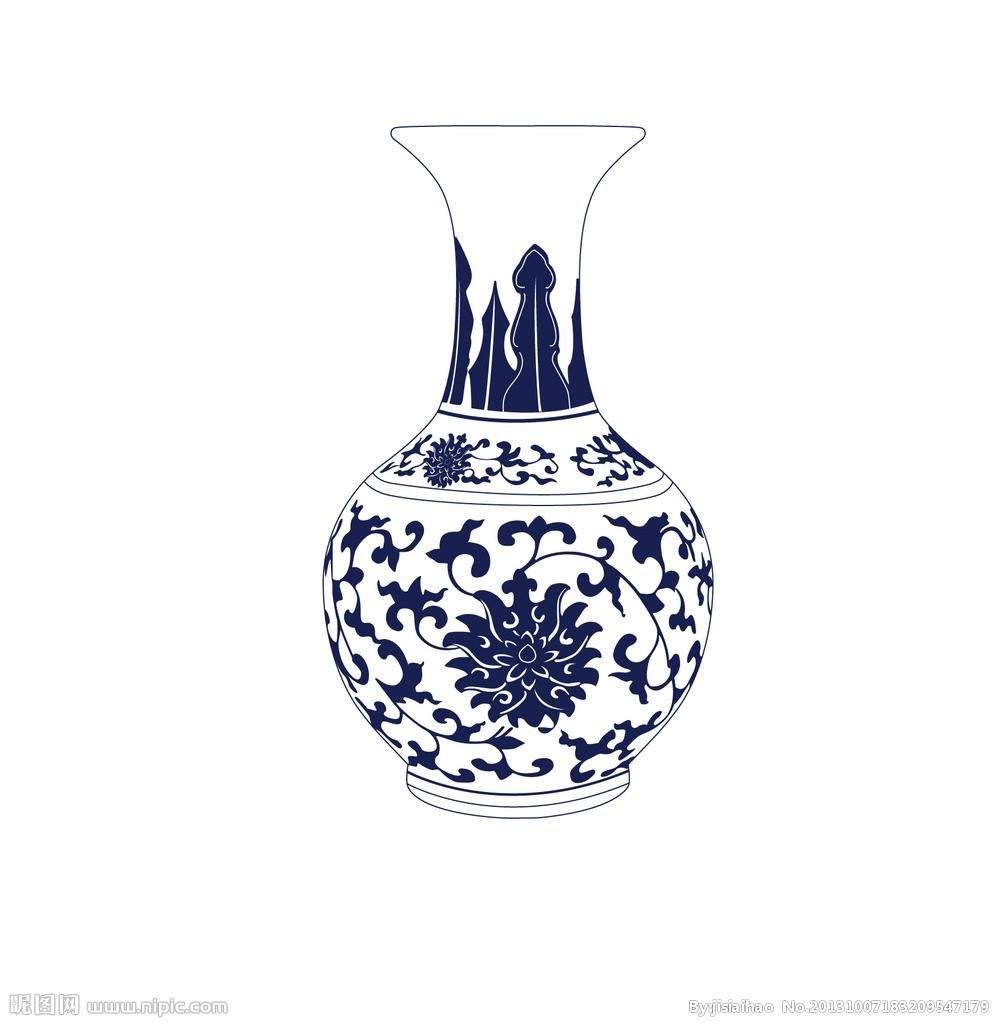
Round-backed armchair from the Ming Dynasty, well-proportioned in scale and lofty in shape.
Zheng He went on his occidental voyages for seven times and expanded the economical and cultural exchanges between China and other countries. In the later period of the Ming Dynasty, the seeds of production relations of capitalism appeared in the regions south of the Yangtze River. The Western science and technology, such as machinery and physiology, were steadily introduced into China by missionaries.
These factors promoted an all-around development of the industrial art of the Ming Dynasty and a handicraft style, refining, dignified, simple and decorative, was finally formed. Obviously the handicrafts of the Ming Dynasty formed two major systems: the court handicraft and folk handicraft. The former laid stress on technology and themeans of expression was rigorous while the latter inclined to artistic expression and had a strong flavor of life. In a word, the handicraft of the Ming Dynasty was a matured period for the development of the national style of the industrial art of China, available basically with the main features of the modern times.
At the beginning of the Qing Dynasty, with the recovery of agriculture, handicrafts and commerce developed. During the reign of Kangxi(1662-1722), Yongzheng (1723-1735) and Qianlong (1736-1795), ceramics, dyeing and weaving, lacquer ware, and carving and engraving all developed to some extent. In the respect of ceramics, Jingdezhen was still the porcelain-making center, developed in firing technology and various in glaze varieties. During the Kangxi Empire, priority was given to ancientcolors, vigorous and robust; during the rule of Yongzheng, colored porcelain was the most outstanding, tasteful and delicate; and during the reign of Qianlong, enameledcolor porcelain was the greatest achievement, overelaborate and meticulous. In the respect of dyeing and weaving, the silk and satin of Suzhou and Hangzhou, the clouo brocade of Nanjing, the brocade of Sichuan, the textile of Guangdong, the printing and dyeing of Shanghai, the rug of Xinjiang and Ningxia were known nationwide.
Embroidery also formed local characteristics and respective technological systems with the embroidery of Suzhou, Guangdong, Sichuan, Hu’ nan and Beijing as the mostfamous. Of the metal handicraft, cloisonne had somewhat innovation with the Qianlong period as the most developed. As all techniques were comprehensively used, it became a commodity for export at the end of the Qing Dynasty. Lacquer ware gradually formed different fabrication centers with respective local features, such as the carved lacquer ware of Beijing, the lacquer ware of Yangzhou inlaid with mother-of-pearl, and the bodiless lacquer ware of Fuzhou. The painted clay figurine of the Qing Dynasty was represented by the artisan “Clay Figurine Zhang”of Tianjin and the clay figurine of Huishan, Wuxi. They were either combined with practical use or used as toys, very popular among the people. In the respect of ornament, the auspicious patterns, popular in the Ming Dynasty and the Qing Dynasty, achieved the effect of “having meaning in all pictures and expressing auspiciousness in all implications” through the use of symbol, implication, homonym, metaphor, and Chinese character.
Painted enamel pot from the Qing Dynasty, collected in the Palace Museum.
Portable lacquer hand-warmer with landscape patterns traced in gold from the Qing Dynasty, collected in the Palace Museum.
In short, the arts and crafts of the Qing Dynasty inherited the tradition of theMing Dynasty and had some development in its production technology and artistic creation before its middle stage. The handicraft creation tended to be sophisticated and exquisite during the later stage but the production skills still had certain development. The varieties of the handicraft arts of the Qing Dynasty were plentiful and technological skills were applied in a comprehensive way, which can be used for our reference. However, the drawing-like ornament that played a leading role is neither in coordination with utensils nor with shapes, so it is inappropriate for us to use it in handicraft articles. Some handicraft varieties even applied foreign culture in a mechanical way for ornament. That is not what we should learn from. With the change of the modern social formation and people’s way of life in China, the industrial art of China has undergone a transformation from traditional form to modern form and given first place to the life of the masses. As a result, machines are used for the main technology to make handicraft articles, which fits in with the modern aesthetic taste, concise and practical.
Su(Jiangsu) embroidery portrait of Jesus,55.3×41.4 cm, made in 1914 by Shen Shou(1847-1921), representative of modern Su embroidery, housed in Nanjing Museum. Dispatched by the Qing government, Shen Shou went to Japan in 1904 to make a survey of embroidery and painting. Back home he created’ simulated embroidery,”using for reference the principle of light and colour in western fine art. As her representative work, the portrait of Jesus was made using over a hundred kinds of color thread with light and colour ingeniously shown, the expression distinct, having three-dimensional effect. The work was awarded first prize in 1915 U.S. Panama World Exposition. In 1914, Shen Shou was appointed as director of the Jiangsu Nantong Needlework School set up by modern industrialist Zhang Jian. Shen wrote Xuehuan’s Embroidery Guidebook.
Defeated in the Opium War (1840-1842), China was forced to open its door to the Western Powers. With overseas commodities dumped on the Chinese market and China’s raw materials plundered by the Western powers, the self-sufficient economy of the Chinese feudal society soon disintegrated. As a result, traditional Chinesehandicrafts went downhill year by year, quite a number of handicraftsmen suffered bankruptcy, some becoming destitute and homeless. However, during the period of Taiping Heavenly Kingdom uprising (1851-1864), China’s traditional handicrafts witnessed a certain extent of recovery and growth, in particular in the trades of dyeing-and-weaving, metralworking, sculpture, and New Year pictures. During the reign of the Taiping Heavenly Kingdom, handicraftsmen were held in high regard.
They were organized in their production and a concept to “benefit the people”was advocated that “objects of some use should be treasured”(see A Proposal for Creating a New Nation) while new policies encouraging innovation in handicrafts were instituted.
Impacted by Western material culture in recent years, Chinese traditional lifestyle and mode of production were forced to take a turn and with it the traditional arts and crafts which are in conformity to it. In the first place, following the import of overseas capital, production using machines together with corresponding technology was introduced to China, causing the traditional hand-making skills gradually transferred towards modern technology adaptable to machine production. Secondly, the targetsof service had changed.A part of the handiwork used to be used by the imperial family and aristocrats was exported to suit the need of overseas market whereas more traditional handicrafts were geared to the needs of the masses of the people at home.
Besides, the way by which traditional handicrafts are handed down from master to apprentice and from parents to children had also changed. During the late Qing dynasty, modern arts-and-crafts education based on school education, teaching both handicrafts skill and machine technological know-how began to sprout in some missionary schools, industrial schools, and new-type schools appearing after the 1898 Hundred Day Reform, such as Shanghai Tushanwan Arts and Crafts School established in 1864 by the French Catholic Church, Hubei Handicrafts School; founded by Zhang Zhidong(1837-1909), late Qing dynasty official after the mode of Western technological schools; handicrafts department in Nanjing Liangjiang Normal School founded in 1906 by Li Ruiqing(1867-1920), artist in the late years of Qing dynasty.
New Year picture on Shanghai calendar sitting alone lost in meditation,62×42 cm, Xie Zhiguang(1899-1978),1931. New Year picture on calendar has both the function of calendar and that of poster. The main part of the picture is a modern lady in short-sleeved qipao(close-fitting woman’s dress), wearing wrist watch, sitting upright inside the moon gate. On both sides and upper part of the picture are advertisements of Yongbei brand torch in both Chinese and English, below is the advertisement text for the 1931Chinese and western calendars.
The Revolution of 1911 overthrew the reign of the Qing dynasty, followed by the founding of the Republic of China in 1912. Former imperial workshops for manufacturing handicrafts soon disintegrated. Court handicraftsmen together with folk artisans went to marketplaces to open private workshops, stores, etc. By and by guilds were established. The court handicraft objects made for appreciation in the past such as jadeware, ivory sculpture, cloisonne, carved lacquerware, etc. now turned to be exported through compradors or overseas firms, or went to the ordinary people.
Handicrafts such as dyeing and weaving, ceramics etc. that are closely related to the people’s livelihood had shifted to machine production. During World War I when Western powers had no time to look eastwards, modern industries and commerce hada rapid development with dyeing and weaving factories sprang up like mushrooms.
Meanwhile, traditional New Year pictures, advertisements, packing, etc. influenced by modern Western design, also took on a new appearance. One of the typical example is the advertisements on calendars which, integrating traditional Chinese New Year pictures with modern advertisement, traditional Chinese calendar and Western calendar, made their appearance in Shanghai in the late Qing dynasty and were prevalent in the 20s and 30s of the 20h century.
But good times don’t last long, as the saying goes. When the War of Resistance Against Japan broke out in 1937, market became dull, the people had no means of livelihood, and traditional handicrafts suffered severe damage. However, in the Liberated Area, to cope with the attack and blockade of the enemy, the Community Party of China launched the “Campaign for Great Production,”calling on the people to “get to work so as to live a life of plenty”in which traditional handicrafts attained anew growth, in particular those that are closely associated with local military affairs, politics, economy and people’s life such as dyeing and weaving, pottery and porcelain, glass, woodwork, knitting, packaging, embroidery, etc.
During the period of the Republic of China, arts and crafts developed further on the basis of the development during the late Qing dynasty, and so were external exchanges. More and more students went studying abroad on state scholarship or at their own expense, and more and more people went abroad to attend international exhibitions. At that time, applied arts education covering pattern education(practical fine art education) in public and private schools of fine arts, handwork education in normal schools, and craft education in industrial school and vocational schools, had become the rising forces in the development of traditional arts and crafts. For example, Chen Zhifo(1896-1962), the first person who went to Japan to study arts and crafts, founded the “Shangmei Pattern Center”(1923-1927) when he returned to China. In this establishment,a large quantity of dyeing and weaving patterns were designed in which modern theory on arts and crafts were summed up. Others include Pang Xunqin(1906-1962) who studied first modern arts in France and then applied arts back home, had published A Collection of Chinese Patterns in which he sorted out and studied ancient and folk decorative patterns using modern concept. In 1941, he published A Collection of Applied Arts which contains patterns designed for household decoration.
The arts and crafts education during the period of the Republic of China has established the status of arts and crafts education as a branch of learning, which has exerted far-reaching influence over arts and crafts education and art design education in later years.
Cover of Collection of Arts and Crafts,designed by Pang Xunqin(1906-1985),1941.In this book,with concept of modern design using past dynasties’ornamental patterns,he designed 30 articles of everyday use including carpet,tablecloth,teapot,etc,elegant in style,having distinct.
